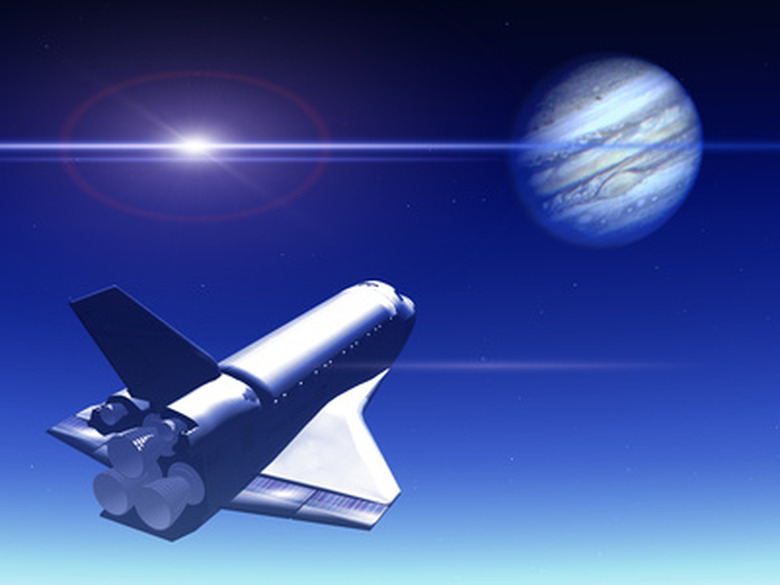School Projects Of Jupiter
Jupiter is the largest planet in our solar system, with a diameter of 88,846 miles (more than 11 times greater than Earth's diameter). It is composed primarily of hydrogen and helium and is well known for its Great Red Spot (actually a permanently fixed storm system). The planet also has several terrestrial moons, including the largest in our solar system: Ganymede. Some school projects about Jupiter include determining your weight on Jupiter, observing Jupiter's moons and making a model of Jupiter.
Determine Your Weight on Jupiter
Determine Your Weight on Jupiter
In addition to being the largest planet in our solar system, Jupiter is also the most massive, with a mass that is 318 times that of Earth's. This mass translates to a larger gravitation pull, which means you would weigh approximately 2.4 times more on Jupiter than you do on Earth. Of course, you would have to use your imagination for this project because Jupiter is entirely gaseous and has no solid ground that you could stand on. Calculate your weight on Jupiter by multiplying your Earth weight by 2.4 and mark down your result. Then stand on on a scale and try to reach your Jupiter weight. At first you can hold heavy objects or have someone push down on your shoulders, but eventually you may need volunteers to stand on the scale with you.
Observe Jupiter’s Moons
Observe Jupiter's Moons
In the early 17th century, Galileo discovered four large moons–Ganymede, Callisto, Io and Europa–orbiting Jupiter, which helped solidify the growing notion that the solar system was not Earth-centered. You can re-create Galileo's revolutionary discovery by observing the moons yourself with the help of a small telescope or–on a particularly clear nights–a pair of binoculars. You will not be able to determine which is moon is which on your first night of Jupiter-gazing. Instead, you will need to plot the movements of the moons you observe over several weeks and record your results. You will then be able to accurately distinguish the moons from one another according to the relative sizes of their orbital paths.
Make A Jupiter Model
Make A Jupiter Model
Younger students can make drawings of Jupiter using crayons. The dark and light colored bands that circle the planet, as well as its unusual spot features, make Jupiter drawings particularly fun but also detail-oriented. For a more advanced project, try making a three-dimensional model of the planet using a large Styrofoam ball and Styrofoam-safe paint. You can also include Jupiter moons by attaching smaller balls to the planet using lengths of wire or dowels.
References
Cite This Article
MLA
Devaney, Erik. "School Projects Of Jupiter" sciencing.com, https://www.sciencing.com/school-projects-jupiter-6299348/. 24 April 2017.
APA
Devaney, Erik. (2017, April 24). School Projects Of Jupiter. sciencing.com. Retrieved from https://www.sciencing.com/school-projects-jupiter-6299348/
Chicago
Devaney, Erik. School Projects Of Jupiter last modified March 24, 2022. https://www.sciencing.com/school-projects-jupiter-6299348/
